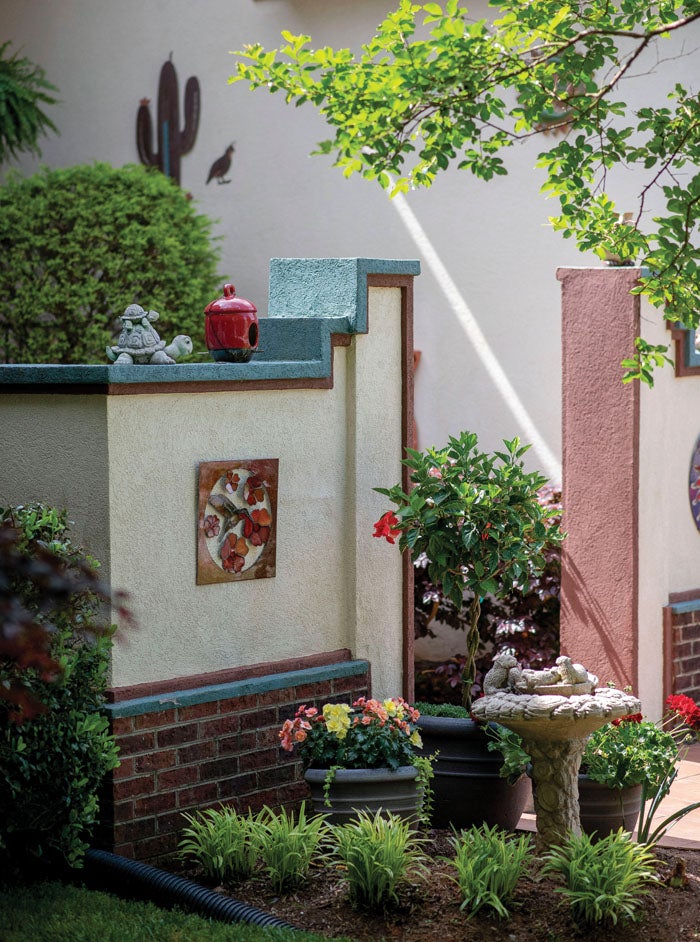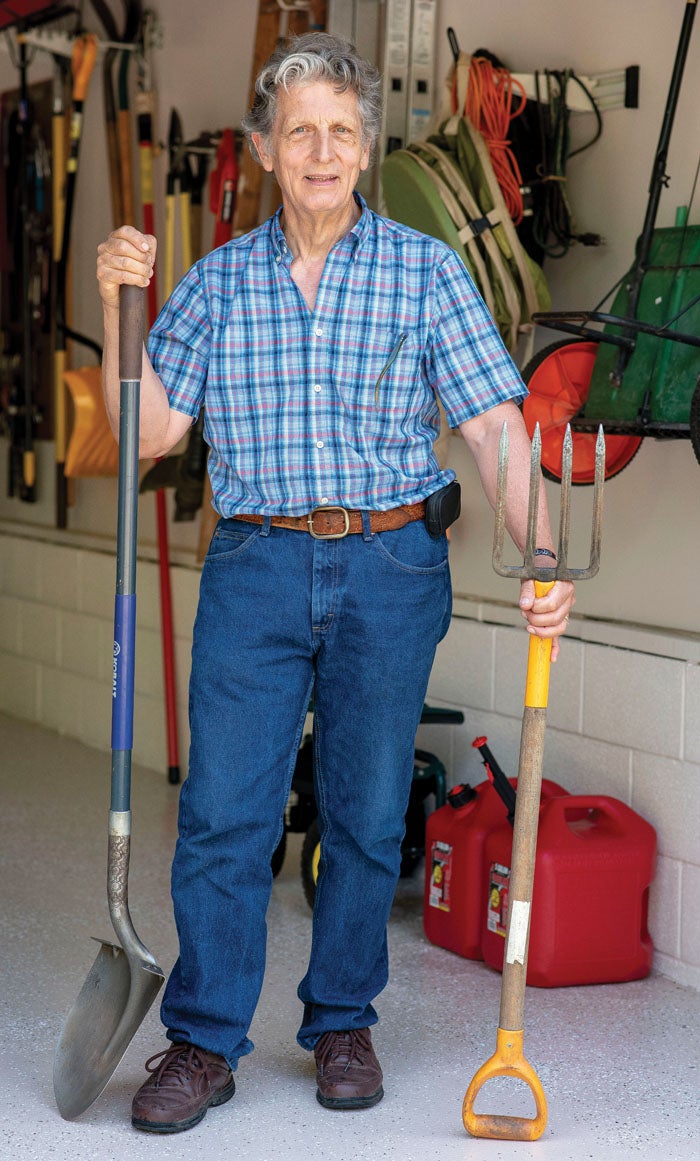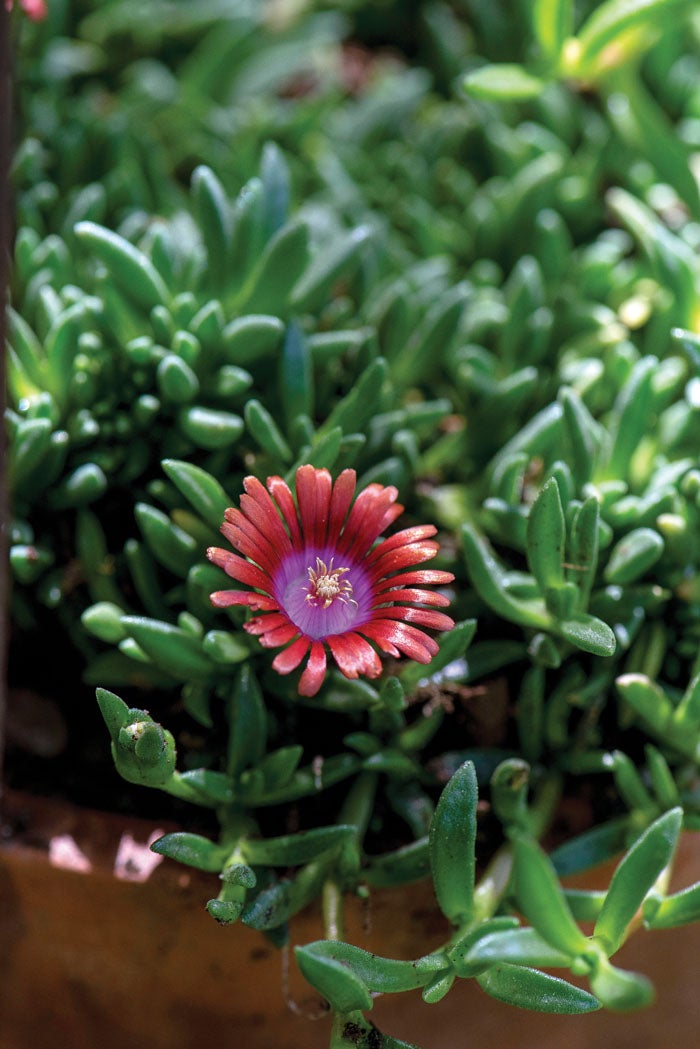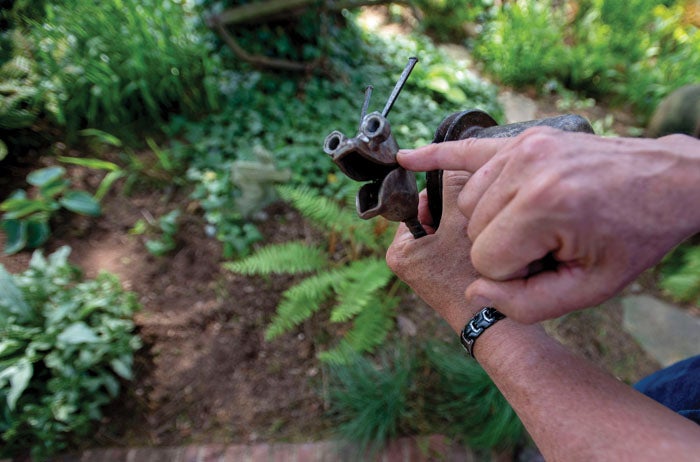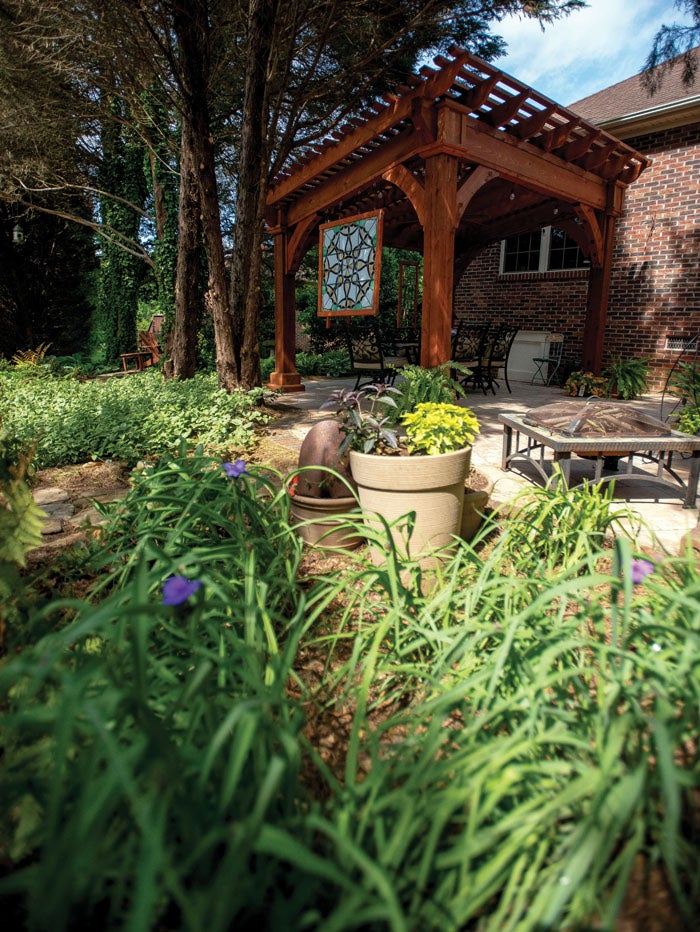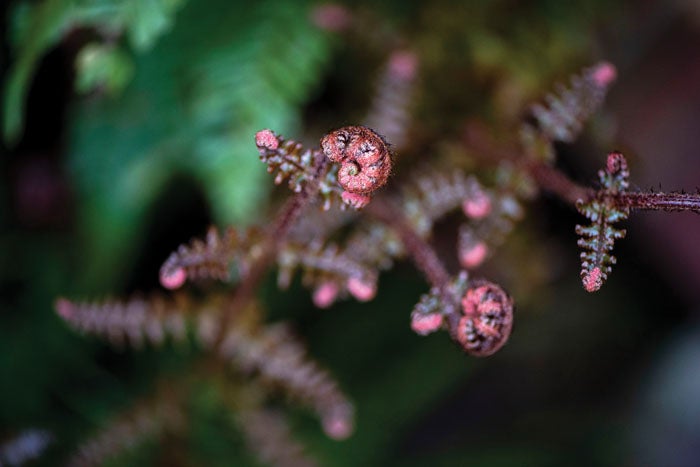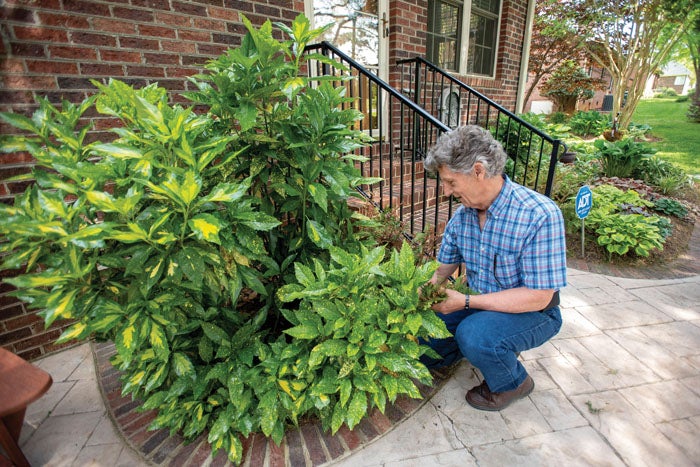It’s not a yard; it’s a garden that Don made
Published 12:00 am Sunday, May 5, 2019
By Deirdre Parker Smith
deirdre.smith@salisburypost.com
On a very warm spring day, Don Doering’s garden is a cool oasis.
It’s the fruit of a lot of back-breaking work and plenty of sweat.
Doering has lived on Kern Drive for about 16 years in a charming house with a stucco courtyard entrance. The sound of running water greets visitors and can be heard throughout the garden.
Beds in front and back are full of every variety of hosta you can imagine, ranging from familiar ribbed leaves to coral bells in a variety of colors, like lime chiffon.
Doering and his wife, Jennifer, have been improving their property since the beginning. When their front porch rotted, he built brick steps and created a small courtyard.
The little courtyard and front walls are adorned with metal suns, painted plaques, mosaics of tile. Under foot, Don put in a tile pattern to lead into the house.
One of the first things they did was plant a large crape myrtle in the front yard, where its graceful form shades another bed of hostas and hellebores. The bark is a light copper and smooth as glass.
Don’t make the mistake of calling this his yard. This is his garden. His mother, born and raised in England, said a yard is something you dump coal or lumber in. “A garden is what’s around your house. She was adamant.”
Walk the brick path around the right side of the house and you’ll see creeping phlox, more hostas and small trees. Look straight ahead at a shady seating area and you will often see Jennifer reading there.
Turn the corner and you’re greeted by an Amish-made cedar pergola, hung with pieces of stained glass, a large table and chairs underneath, just waiting for guests.
In between the multicolored leaves, you’ll find an old kettle, a pottery rabbit, a giant metal praying mantis and a funky metal snail.
He saw the snail in a shop window and asked to buy it. “She said, ‘You can’t buy it, but if you can tell me what it’s made of, you can have it.’”
“Rocker arms,” Don said. “This part is rocker arms, from a car.”
Jennifer says Don did 90 percent of the planting in their garden; a couple of trees were in place.
Tucked in a bed at the side of the house, he’s planted a few tomatoes, a number of herbs and onions. Just next to that is an airy tulip magnolia.
Don is so dedicated to his garden, he’s moved earth and mortar to improve it. A bed at the back of the house held three small cedars.
“They looked so sickly I decided to pull them up,” and they popped out like they had no roots.
He realized the soil was only 4 to 5 inches deep. He found a bed full of used mortar, discarded during the building of the brick house. He excavated it and gave it to his neighbor, who has a ditch that needs fill.
At one point, he noticed the water from his neighbors’ houses was flowing down into his back garden and making a mess. Always looking for solutions, he added rocks and dug what looks like a dry stream bed.
“It works. It takes the water right away.”
You’ll notice an old wooden tiller in the garden, leaning against a tree, and an old wooden chair, fishing poles propped on it, a pottery jug next to it.
There are two more water features in the back. Another fountain in the front of the house features stone otters playing.
Over there is a rusting ice cream maker, and out front near the mailbox is an old reel-to-reel film projector.
Don goes to all the garden centers. He’s at Godley’s so often, and in his gardening clothes, shoppers think he works there.
“Sometimes they give me sad plants or let me have them for 50 cents. I plant them out here, and they come back and thrive.”
Don is originally from Wisconsin and has moved a lot. His brother still lives there.
“I send him pictures of my tulips, and he says, ‘There’s 8 feet of snow here.’”
When they bought the property, he left it alone for a year.
“I looked at the sun and the shade, the water, and then I mapped out a plan.”
It is always a work in progress.
You can tell if you look up his address on Google street view. There he is, maybe five or six years ago, putting water in his birdbath in the front garden.
He swears by his own compost, which Jennifer says is the secret.
“The plants eat what we eat.”
He’s also a big fan of Black Kow manure. His beds are filled with nutritious, well-drained soil, a product of years of amendments and tender loving care.


